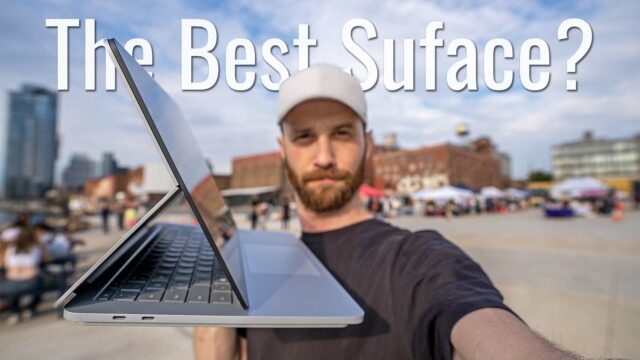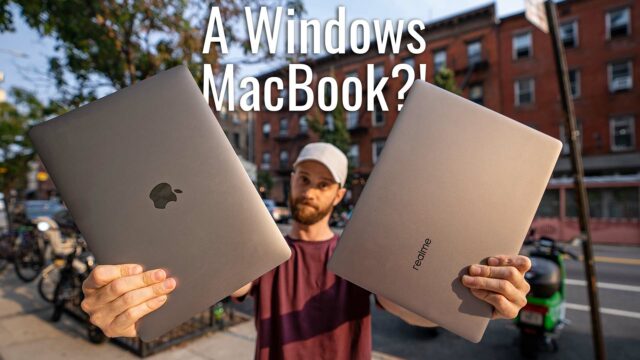Adobe Premiere vs Final Cut Pro X (Video)
I recently did a video comparing Adobe Premiere render speeds on three of the top laptops out right now: the new Macbook Pro 15″ with Touchbar, Surface Book w/ Performance Base, and a gaming laptop by the company Razer called the Razer Blade 2016. Again, this wasn’t meant to be a laptop comparison, but instead a way of showing how these top performing laptops all handled a task that I, personally, have to do every day.
In that video it was pretty apparent that the Razer Blade – the laptop with the most powerful GPU – managed to get the fastest time while doing this very GPU-intensive task (no surprise there). The Macbook Pro, probably the laptop most commonly thought of for editing video (but has the least powerful GPU) performed the slowest. Now, you’d think that would be pretty definitive, but, well, it’s not.
While it is true that if you are using Premiere as your editing program and are focusing on the sheer speed of rendering and working with the footage then the other laptops might be a better bet for you than say the Macbook Pro. But, as I mentioned briefly in that other video, as soon as you use Final Cut, all of that goes out the window. Let me show you what I mean.
Here are the times from the original video:
Now here is the Macbook Pro running the same four minutes of 4.6K footage from my Blackmagic Ursa Mini 4.6K out at the same codec and resolution of the Premiere test (4K YouTube Preset):
27 mins in Premiere becomes about 5 mins in Final Cut (and is even less than half the time of the winning Razer Blade 2016). Crazy, right?
As far as I could find out through talking to a ton of editors that work on feature films, TV shows, at production houses, etc. It comes down to optimization. Apple makes the software (Final Cut Pro) and the hardware in such a way that it takes better advantage of the frankly lesser hardware specs to get the job done in a faster, more efficient way.
So why do people use Premiere if FCP is just so much faster? Besides simple personal preference, there are a few differences every editor tends to mention with their preference being one way or the other. Here is what answers I kept hearing from editors that I interviewed.
Final Cut Pro X vs Adobe Premiere
Final Cut Pro X





- Fast. As mentioned, the optimization of the software built specifically for the hardware makes it probably the fastest editing program to work in.
- Battery Life. Thanks to those optimizations that help with the speed, they also help with battery life, as well.
- Magnetic Timeline. For a lot of professional editors this isn’t a feature, it’s a gripe because it is not the same as they are used to with track-based editing (which we’ll get into why track-based is appreciated later). But when used in conjuction with a feature called auditions in FCPX, for example, you can select multiple takes of a clip and have them easily swap in and out in a specific part of the video with the timeline automatically adjusting everything around it even if the clips are all different lengths.
- Better UI. Simply put, FCPX is more intuitive than Premiere. Common actions that might take multiple clicks in Premiere take less in FCPX. Beyond that, it’s just a cleaner looking interface that “gets out of your way” when editing.
Premiere Pro




- Workflow is similar to old FCP 7 and is, for most FCP 7 users, and easier transition to than FCPX oddly enough.
- Track based editing allows for editors to organize their footage better. All the SFX for the clip can go on one track, all of camera one on one, camera 2 on other, background music on one, vocals on another, etc. This allows for things like adjusting the audio of just one track a lot easier.
- Works with every format, codec, and on every machine. You can throw a .mp4, .avi, .mov, some red footage, and 5 different audio formats and it’ll all run cohesively.
- It can output in every format, codec, etc. There is a giant list of options and for someone just outputting to YouTube that might not matter, but, for example, editors cutting a commercial for a television network, might need to output their video in OMF format to then give to the audio guy to do the audio in so that he can work natively in Pro Tools with the audio in your timeline, etc.
- So. Much. Color Grading. Premiere offers a much more robust set of tools for color grading footage. If you are a YouTuber who is just using the color straight out of your camera, not a big deal. If you are shooting RAW or Log footage and need to put the color back in as well as maybe use LUTs and add shades of color for emotional manipulation of the audience, bigger deal.
- The suite of Adobe. When you get a Creative Cloud account with Adobe, you get all of their software. Programs like Audition used for professional audio editing, After Effects used for professional motion graphics, etc. Not only that, but any files from any Adobe program like AE and Audition, can be pulled into the video and if you edit them back in AE will update in the timeline in real time. Again, not a big deal if you’re doing YouTube videos just talking to the camera, but if you need to add special effects or take out the phone ringing over your talent’s voice this makes for a much faster workflow.
- Collaboration Options. Premiere is just better at being used with groups. Project files can easily be shared with proxies of the footage on everyone’s machine, edited and updated in real time across all the editors using it via Team Project files.
So render times? Eh, Final Cut Pro sort of wins, its optimization being built as software to run on specific hardware is insane. Premiere on the other hand loses out on sheer performance for the benefit of larger compatibility of codecs, formats, machines to be able to run on and, depending on your specific workflow more integration and a faster workflow.
At the end of the day, like most equipment used by professional editors, filmmakers, etc. the editing program you use is simply another tool to use to help make your film a reality. Same as you might use one camera or lens for a specific project, there isn’t a “best editing program”, just a “best editing program for that particular project’s needs”.
Hope that clears some things up and I’m sure you guys have some serious thoughts on the matter so please let me know in the comments below what your preferences of editing software are an why. As always, thanks for reading!







